Figures & data
Figure 1. Skull of chicken with frontal bony protuberance (on the left, PCxPA) and without frontal bony protuberance (on the right, PCxB).
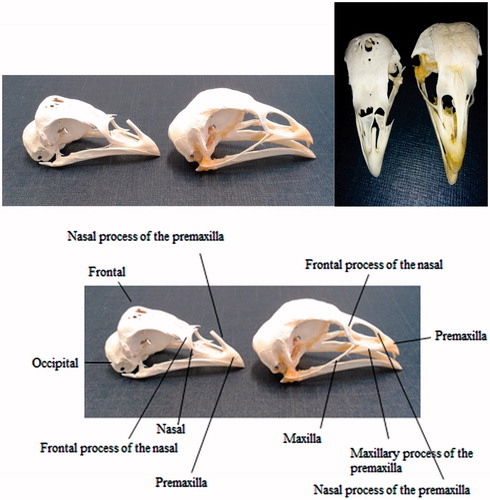
Figure 2. Skull of Padovana camosciata. Measurements: a = skull total length (skull length, comprehensive of the beck length); b = skull total height; c = frontal protuberance height. On the frontal protuberance little holes are indicated (arrows). The star indicates the point from which skull width was measured, from side to side, at eyes level.
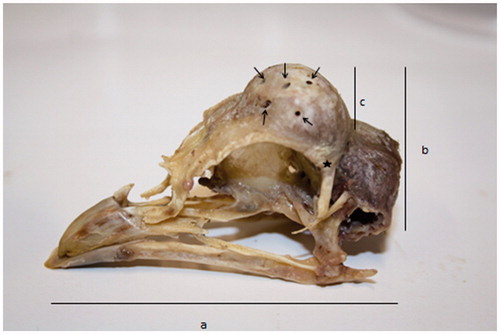
Table 1. Comb, crest and frontal protuberance’s openings classification.
Table 2. Data on the skull morphometry of the three genetic groups.
Table 3. Sexual dimorphism (contrast estimates ± standard error) in skull characteristics of five genotypesTable Footnotea.
Figure 4. Sexual dimorphism in the Padovana varieties, lateral view. PA (above) and PC (below), male (on the left) and female (on the right).
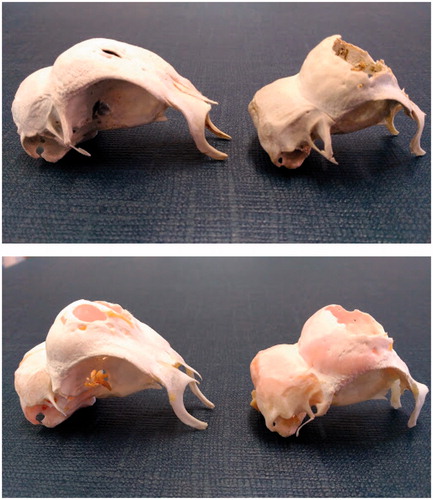
Figure 5. Frontal bone characteristics. Frontal–dorsal view. On the left skull without bony frontal protuberance (PCxB, female) is represented; in the middle skull with bony frontal protuberance with numerous little holes (PCxPA, male); on the right a skull with numerous holes of variable dimension on frontal bony protuberance (PCxPA, male). Note in PCxB the wide slot between the frontal processes of nasal bone, due to the lack of the nasal process of premaxilla removed together with the premaxilla.
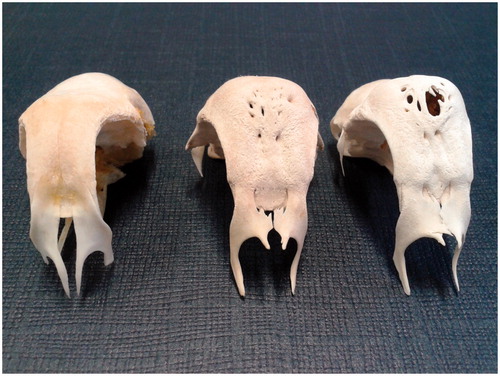
Figure 6. Padovana camosciata skulls (male), view from above. Frontal bone’s holes. In the figure skulls with holes, variables for number and dimensions, are represented. On the right only one big opening is located on the top of the skull.
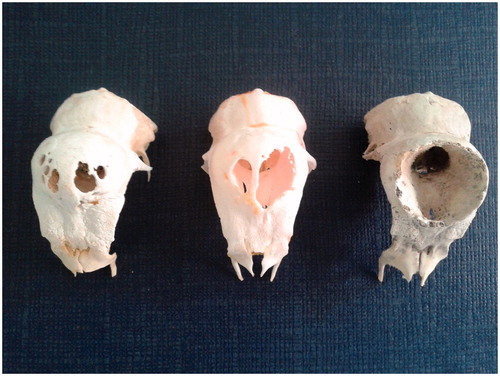
Figure 7. Padovana camosciata skulls, lateral view. In the skull on the right, characterised by a single big hole on the top of the head, the total skull height appears lower than the height of the skull on the left.
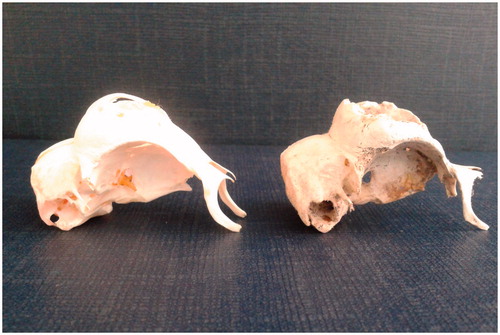
Table 4. Sexual dimorphism in frontal bone openings and comb and crest of the five genotypesTable Footnotea.
Table 5. Contrast estimates ± standard error for skull and head parameters for PA, PC and PCxPA chickens.
Table 6. Contrast estimates ± standard error for skull and head parameters for B, PC and PCxB chickens.
Table 7. Correlations between skull and head parameters according to the genotypesTable Footnotea.

